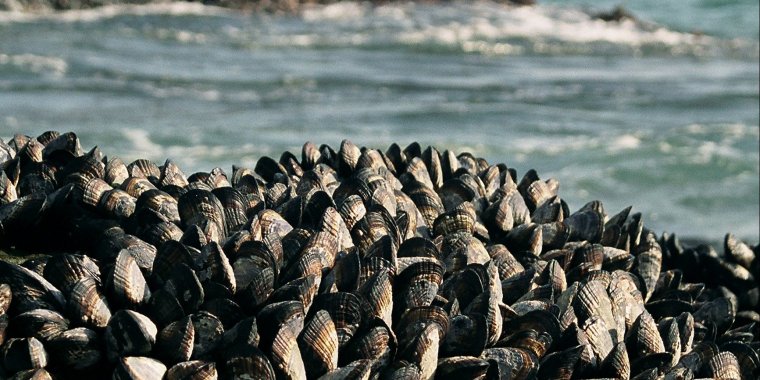| News / Science News |
Changing seawater hints at future for adhesives from ocean species
Animals such as mussels are able to stick to their environment -- literally. A scientist who studies ocean species to develop adhesives is now looking at the changing chemistry of seawater to see how it may affect the ability of mussels to adhere to their surroundings. The researcher is using these insights to design adhesives for consumer products.

Scientists who study ocean species are designing adhesives for consumer products. Photo: Purdue University
Jonathan Wilker, a Purdue University chemist and materials engineer, studies how mussels secrete sticky plaques for attaching to wet surfaces. Wilker and colleagues use these discoveries to create new, biomimetic adhesives for everything from electronics and vehicles to construction structures and cosmetics.
"Seeing a fairly direct correlation between seawater iron content and mussel adhesive performance provides us with ideas for designing new and robust synthetic materials," Wilker said.
The mussels' adhesive is rich in iron, which may help make the attachments strong and flexible. The team set out to test what happens when the animals are surrounded by different concentrations of iron.
"We wanted to understand how mussels' access to iron might influence the formation and performance of their adhesive systems," Wilker said.
The researchers grew animals in waters with low, regular and excess levels of iron. "We found that there was a general trend in which the strength of the mussels' adhesive tracked with iron levels in the surrounding seawater," Wilker said. "'When there was less iron, the glue was weaker. More iron than normal brought about the strongest bonding. At an extreme excess of iron, however, performance dropped."
As the oceans become more acidic, forms of iron transition from solid to dissolved, according to Wilker. "In the years to come, if less iron is in solid forms, these filter feeders will have difficulty capturing the iron they need for making their adhesive." (National Science Foundation)
YOU MAY ALSO LIKE





